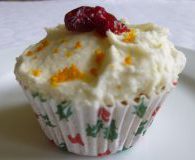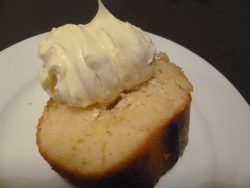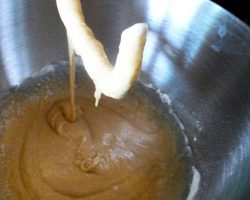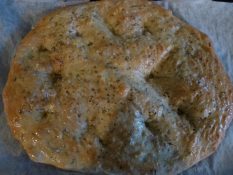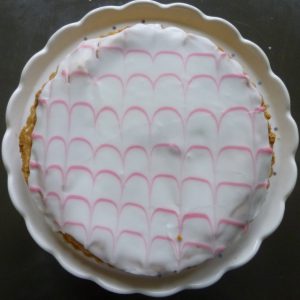“Bakers, you have three hours,” said Sue Perkins at the start of the technical challenge for dessert week on the Great British Bake Off. Three hours. I started making Mary Berry’s marjolaine at 9.30am and finished just as An Extra Slice started on BBC 2, twelve hours later. True, I did take a bit of a break to pick the children up from school and nursery, but I still took half a day longer than the allotted Bake Off time.
I used the recipe from the Great British Bake Off website, but it’s also available on BBC Food, The Bake Off site says that this is one for the super-organised multi-tasker. That’s not me. Sometimes it’s a struggle to focus on one thing, any more and I start to go slightly mad (I wasn’t always like this, I blame the children). Anyway, the marjolaine…

Here is it. At 9.30 on Friday morning though, this was a long, long way in future.
I started by grinding almonds and hazelnuts in our teeny-tiny food processor. There were a few big pieces left in the grinder, but it had started to overheat, so I took them out and ate them. I didn’t want to risk them in the meringue. I know it’s supposed to have a bit of a bite, but I didn’t want to break anybody’s teeth. I spread the nuts onto a baking tray and put them in the oven at 160° fan for about 12 minutes. I used the twelve minutes to wonder whether I could have used ready ground almonds, and whether it would have been OK to roast the nuts before grinding them. I put the nuts into a bowl and, once they were cool, I added caster sugar and cornflour.
Next came the meringue. I whisked some egg whites in the KitchenAid until there were frothy, then I cranked up the speed and added caster sugar tablespoon by tablespoon until the mixture was thick and glossy.
 I folded the nuts, sugar and cornflour mix into the meringue and divided the mixture between two Swiss roll tins. The recipe says that the tins should be 30cmx20cm. Mine are a little bit bigger. It didn’t really matter, I had enough meringue to comfortably fill them both. They went into the oven at 130° fan. I checked them after 45 minutes. They were supposed to be lightly golden and firm to the touch. Mine didn’t seem that golden, but they were certainly firm. A bit on the crisp side even. Oh well. I opened the oven door and left them to cool.
I folded the nuts, sugar and cornflour mix into the meringue and divided the mixture between two Swiss roll tins. The recipe says that the tins should be 30cmx20cm. Mine are a little bit bigger. It didn’t really matter, I had enough meringue to comfortably fill them both. They went into the oven at 130° fan. I checked them after 45 minutes. They were supposed to be lightly golden and firm to the touch. Mine didn’t seem that golden, but they were certainly firm. A bit on the crisp side even. Oh well. I opened the oven door and left them to cool.
While the meringues were in the oven I made the ganache. Does this count as multi-tasking? I put some dark chocolate into a bowl. I had some trouble with percentages of cocoa again. The recipe called for 46% cocoa solids. This is Tesco’s own plain chocolate. The only thing was, I hadn’t bought enough. I had to make a quick trip to our nearest shop (an Asda garage) to get some more, and they only had Green & Blacks 70%. Perhaps this is why, when I poured hot cream over the top, it didn’t really melt. I had to put it into the microwave. Probably a terrible sin in the baking world. I decided that, since it was, mainly, going into the middle of the cake, it wouldn’t really matter that much. Nobody would care whether it was glossy or not, as long as it was edible and tasted of chocolate.
Next for the praline to go into the praline buttercream. I toasted some blanched almonds in a frying pan. The kitchen, by this time, smelled absolutely lovely. Chocolate, toasted nuts. Delicious. I then put caster sugar and water into a pan and heated it.
I bought a sugar thermometer for my very first post on Let’s Bake the Books, my doughnut cupcakes, and I know I’ve complained about not being able to hold the thermometer and swirl the sugar simultaneously, because the clip that holds the thermometer onto the pan is too high so I have to hold onto the thermometer all the time. I found out this week that, guess what? The clip moves. I can move the clip up and down to fit my pan. I’ve said before that I’m not an unintelligent person, but sometimes I do start to wonder. Anyway, I dissolved the sugar in some water, swirled it around the pan a bit and waited for it to reach 170°. Once the mixture hit the magic number, I took it off the heat, tipped in the almonds, gave it a bit of a stir, and poured the mixture onto a lined baking tray.
 I waited for it to cool, broke it up and blitzed it in the food processor.
I waited for it to cool, broke it up and blitzed it in the food processor.
On to the buttercream. The buttercream in the recipe is for French buttercream where you whisk up eggs yolks, pour in sugar syrup, and then add butter. To me, this seems like a multi-tasking nightmare in itself. I have tried to make this type of buttercream before with very poor results. The sugar syrup solidified on the side of the bowl, and the buttercream ended up with a really slimy texture. Anyway, I manhandled the KitchenAid as best I could across the kitchen and put it next to the hob. I put it onto the slowest speed and started whisking my egg yolks. I clipped my sugar thermometer onto my pan and dissolved sugar and water and heated to 115° (soft ball stage). Once there, I poured it quickly, and with as much precision as I could manage, into the bowl of the KitchenAid and whisked until the bowl was cool. Then I whisked in some softened butter. I did a taste test and it was fine. Much better than my last attempt. I folded in the praline, tasted again and it was very good. Very good indeed.
This was where I left for school pick-up. I came back to the task of assembly a couple of hours later feeling refreshed and ready to go.
Assembly started with the meringues.
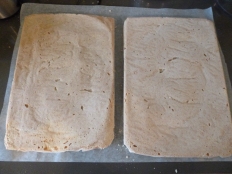
I cut them both in half lengthways. There was a bit of breakage, but nothing too drastic. I put the most stable slice onto a very long serving plate (usually only used for carrots at Christmas dinner) and spread a layer of the buttercream over the top. I put another meringue slice on top and topped that with a layer of ganache (which had to be microwaved again so that it was thin enough to pipe). Another layer of meringue and buttercream went on top of that, followed by the final meringue slice. I covered the cake with the remaining buttercream and covered the sides with toasted flaked almonds. This was a job and a half. I got covered in buttercream, and the almonds didn’t stick very well at all. Finally, I piped chocolate ganache around the edge of the cake and parallel lines over the top and filled the sections with pistachios and flaked almonds (I was supposed to use chopped hazelnuts, but I didn’t buy enough so I used almonds instead. I had a big bag of them).
 Then, I treated myself to a rather large gin.
Then, I treated myself to a rather large gin.
The marjolaine was enormous and impossible to eat in anything other than huge slabs. Here’s one of them.
 I was pretty pleased with how the cake turned out. I think the meringue may have been a bit on the dry side, but it tasted really good. Very chocolatey, very nutty and very indulgent. Make it again though? I’m not sure I have the time.
I was pretty pleased with how the cake turned out. I think the meringue may have been a bit on the dry side, but it tasted really good. Very chocolatey, very nutty and very indulgent. Make it again though? I’m not sure I have the time.


